Cytokeratin 5 (PT0184R) PT® Rabbit mAb
- Catalog No.:YM8114
- Applications:WB;IHC;IF;IP;ELISA
- Reactivity:Human; Mouse; Rat;
- Target:
- Cytokeratin 5
- Gene Name:
- KRT5
- Protein Name:
- Keratin type II cytoskeletal 5
- Human Gene Id:
- 3852
- Human Swiss Prot No:
- P13647
- Mouse Gene Id:
- 110308
- Mouse Swiss Prot No:
- Q922U2
- Rat Gene Id:
- 369017
- Rat Swiss Prot No:
- Q6P6Q2
- Specificity:
- endogenous
- Formulation:
- PBS, 50% glycerol, 0.05% Proclin 300, 0.05%BSA
- Source:
- Monoclonal, rabbit, IgG, Kappa
- Dilution:
- IHC 1:200-1:1000,WB 1:1000-1:5000,IF 1:200-1:1000,ELISA 1:5000-1:20000,IP 1:50-1:200,
- Purification:
- Protein A
- Storage Stability:
- -15°C to -25°C/1 year(Do not lower than -25°C)
- Other Name:
- KRT5;Keratin; type II cytoskeletal 5;58 kDa cytokeratin;Cytokeratin-5;CK-5;Keratin-5;K5;Type-II keratin Kb5
- Molecular Weight(Da):
- 62kD
- Observed Band(KD):
- 62kD
- Background:
- keratin 5(KRT5) Homo sapiens The protein encoded by this gene is a member of the keratin gene family. The type II cytokeratins consist of basic or neutral proteins which are arranged in pairs of heterotypic keratin chains coexpressed during differentiation of simple and stratified epithelial tissues. This type II cytokeratin is specifically expressed in the basal layer of the epidermis with family member KRT14. Mutations in these genes have been associated with a complex of diseases termed epidermolysis bullosa simplex. The type II cytokeratins are clustered in a region of chromosome 12q12-q13. [provided by RefSeq, Jul 2008],
- Function:
- disease:Defects in KRT5 are a cause of epidermolysis bullosa simplex Dowling-Meara type (DM-EBS) [MIM:131760]. DM-EBS is a severe form of intraepidermal epidermolysis bullosa characterized by generalized herpetiform blistering, milia formation, dystrophic nails, and mucous membrane involvement.,disease:Defects in KRT5 are a cause of epidermolysis bullosa simplex Koebner type (K-EBS) [MIM:131900]. K-EBS is a form of intraepidermal epidermolysis bullosa characterized by generalized skin blistering. The phenotype is not fundamentally distinct from the Dowling-Meara type, althought it is less severe.,disease:Defects in KRT5 are a cause of epidermolysis bullosa simplex Weber-Cockayne type (WC-EBS) [MIM:131800]. WC-EBS is a form of intraepidermal epidermolysis bullosa characterized by blistering limited to palmar and plantar areas of the skin.,disease:Defects in KRT5 are the cause of Dowling-D
- Subcellular Location:
- Cytoplasm
- Expression:
- Expressed in corneal epithelium (at protein level).
- June 19-2018
- WESTERN IMMUNOBLOTTING PROTOCOL
- June 19-2018
- IMMUNOHISTOCHEMISTRY-PARAFFIN PROTOCOL
- June 19-2018
- IMMUNOFLUORESCENCE PROTOCOL
- September 08-2020
- FLOW-CYTOMEYRT-PROTOCOL
- May 20-2022
- Cell-Based ELISA│解您多样本WB检测之困扰
- July 13-2018
- CELL-BASED-ELISA-PROTOCOL-FOR-ACETYL-PROTEIN
- July 13-2018
- CELL-BASED-ELISA-PROTOCOL-FOR-PHOSPHO-PROTEIN
- July 13-2018
- Antibody-FAQs
- Products Images
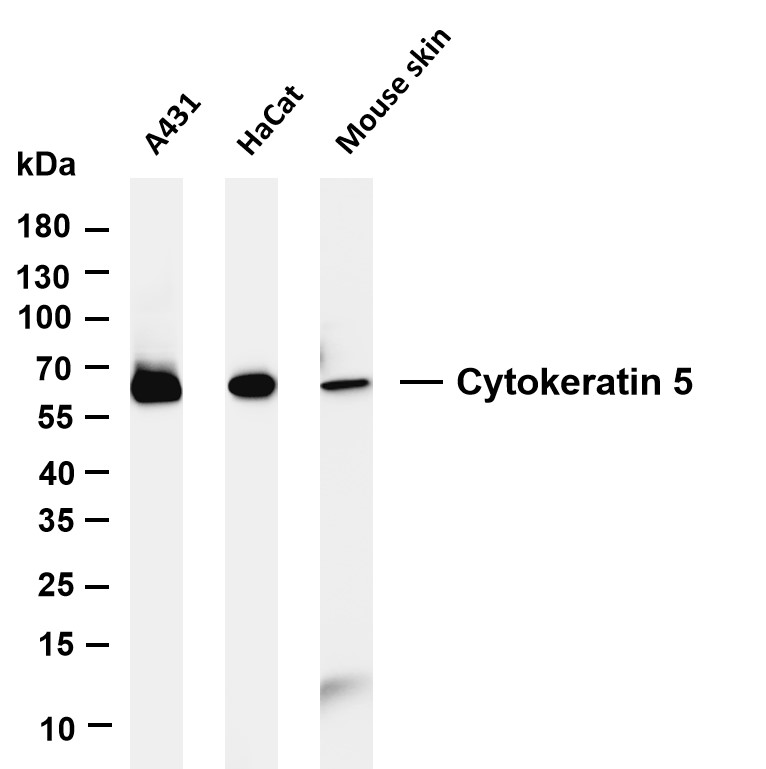
- Various whole cell lysates were separated by 4-20% SDS-PAGE, and the membrane was blotted with anti-Cytokeratin 5 (PT0184R) antibody. The HRP-conjugated Goat anti-Rabbit IgG(H + L) antibody was used to detect the antibody. Lane 1: A431 Lane 2: HaCat Lane 3: Mouse skin Predicted band size: 62kDa Observed band size: 62kDa
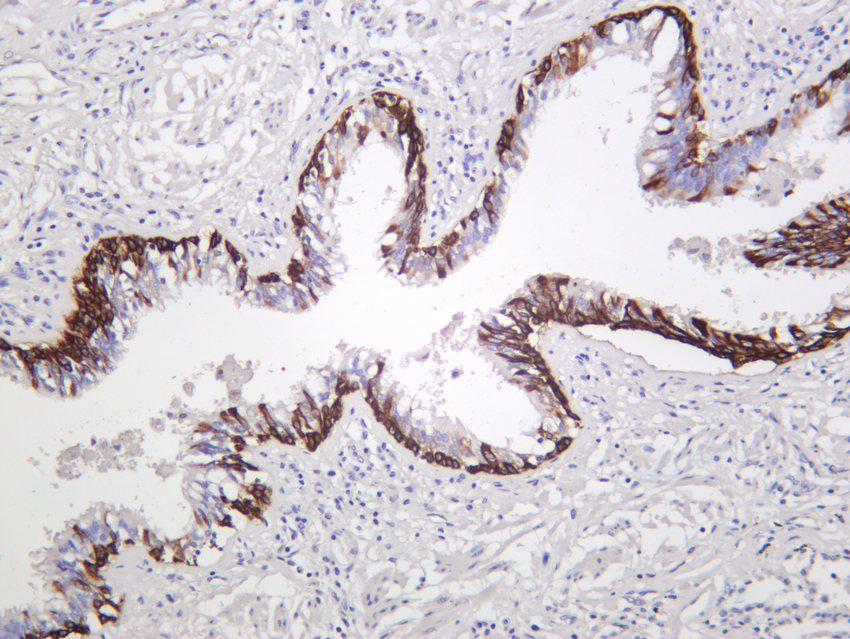
- Human lung was stained with anti-Cytokeratin 5 (PT0184R) rabbit antibody
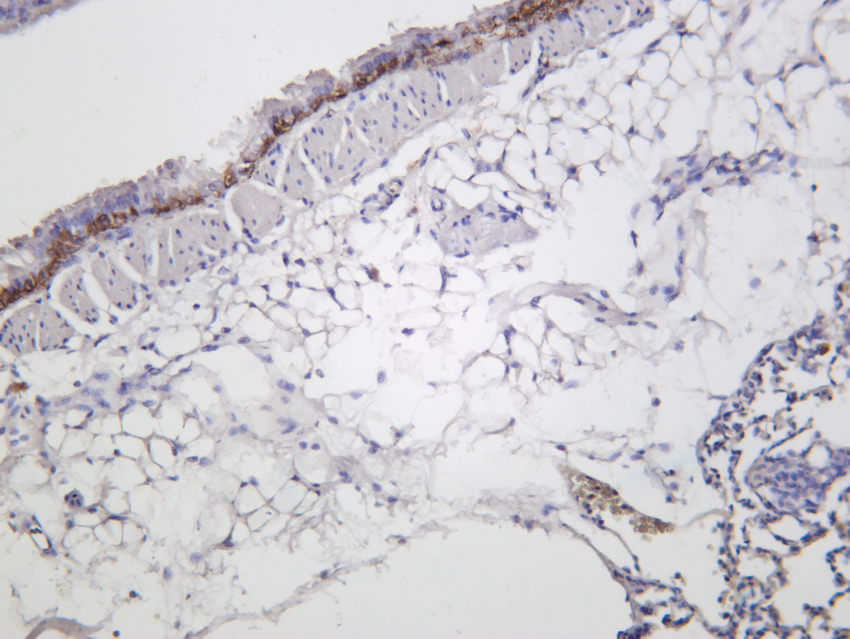
- Mouse lung was stained with anti-Cytokeratin 5 (PT0184R) rabbit antibody
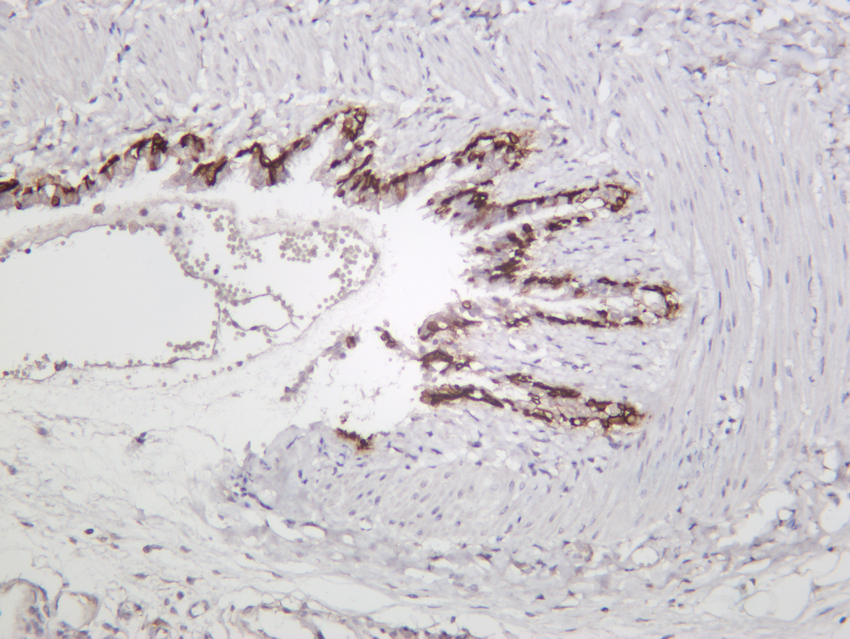
- Rat lung was stained with anti-Cytokeratin 5 (PT0184R) rabbit antibody
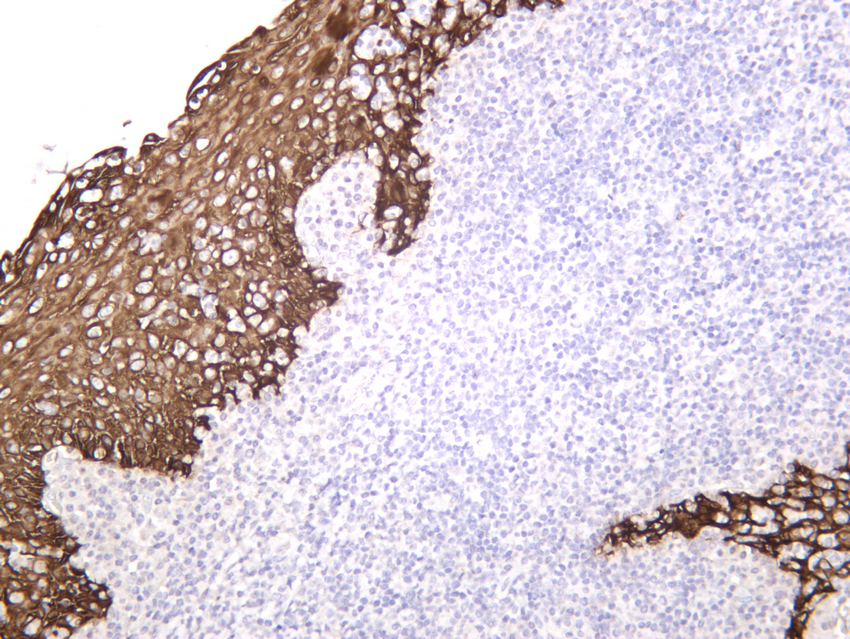
- Human tonsil was stained with anti-Cytokeratin 5 (PT0184R) rabbit antibody



